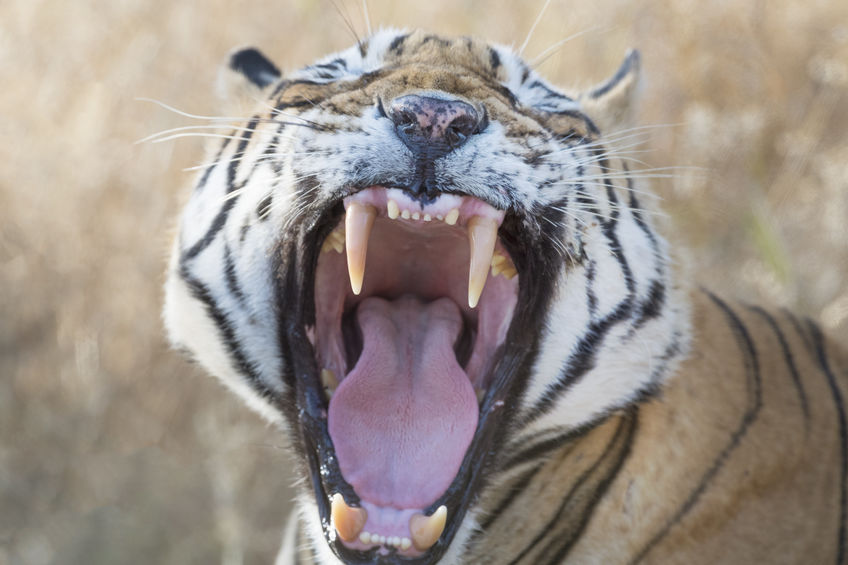One of the biggest push backs to economic development today is that it destroys nature. Radical organizations like Extinction Rebellions label capitalism and agriculture as evil. More specifically, they blame the fossil fuel industry and the rapid industrialization for the loss of ecosystems and habitats.
On September 10, 2020, the Guardian UK ran an article which stated “Wildlife populations are in freefall around the world, driven by human overconsumption, population growth and intensive agriculture.”
But is wildlife conservation possible in the midst of economic development, increased resource utilization, and population growth?
The scenario in India has shown that it is possible. During the last two decades, both conservation and economic development have been made possible in India. The country’s Tiger population and the total forest area have increased despite rapid industrialization and urbanization across the country.
Increasing Tiger Population and Forest Area
Tiger is a keystone species, and thus very important for conservation efforts, as a healthy tiger population (and the protection of its habitat by armed guards) ensures the protection of the ecosystem from illegal exploitation.
In India, tigers were pushed to the brink of extinction because of centuries of hunting. Between 1990 and 2006, the tiger population plummeted dramatically. India had merely 1411 tigers in 2008.
However, as per the most recent census (2018), India has 2967 tigers, which represents 70% of all the tigers in the world. The increase in population has been staggering. In the 10 years (2008 to 2018), the number has doubled. There has been a 33% increase in the tiger population between 2014 and 2018. With a string of efforts undertaken to protect them, a further increase in their population is expected in the coming years.
And it is not just the tigers. The total forest area in India has also been increasing in recent years. Data from a recent forest survey show that the forest cover has increased by 0.56% between 2017 and 2019. There has also been an increase in overall tree cover in the country. Yet, all we hear in the mainstream media is the destruction of forests and habitats, especially because of coal mine expansions.
Rapid Urbanization and Industrial Expansion
In perspective, this increase in forest cover and the revival of the Tiger population occurred during a phase when the the population of the country increased by 152 million (2008-2018). Besides the increase number of people, the quality of life also increased dramatically.
The country’s GDP grew 7.1 percent per year (on average) between 2008 and 2018. The life expectancy rate increased from 65 to 69 in those 10 years. This rapid growth in GDP and the improvement in living standards was assisted by the strong coal sector, which contributes around 75% of the country’s primary energy needs. Together with oil and gas, the fossil fuel sector contributes 87% of all energy consumed in the country.
Overall, India’s growth was a stable one, involving a rapid expansion of industries, cities, and increased utilization of natural resources, especially from forest areas.
Despite this rapid development, around 300 million in the country still live in abject poverty. Further, the recent COVID-19 lockdown has caused millions to fall back into the poverty category.
With the persistent challenge of poverty and 1.3 billion people to cater to, India will not be compromising on its developmental goals. The successful numbers of Tiger population and the increase in forest area will only strengthen its confidence in its ability to conserve wildlife whiles pursuing an energy intensive economic development policy.
India’s Tigers are not alone in the conservation success story. The Arctic countries, collectively, have been partly responsible for the revival of the Polar bear numbers in the Arctic. Polar bear numbers remained stable since 2005 amidst contrary claims in the popular media. In Canada’s Nunavut province, their population grew so much that the local authorities requested for an increase in Polar bear killing quota that will allow the indigenous Inuit people to cull more bears.
These are just a few examples. There are hundreds of critically endangered species that still require our attention to bounce back from their dismal population numbers. However, the need for conservation of these species should not be used as an excuse to stop developmental projects that act as a lifeline of resource supply to the growing population across the globe. Policy makers and the official environmental departments of various countries must steer themselves clear of extreme radical environmentalist lobby groups that tend to suppress the resource demand in the name of conservation. The success story of India—with its population of 1.3 billion—proves that conservation is possible in the midst of economic development, provided policy makers adopt a development-centric approach with due diligence to the needs of conservation.
